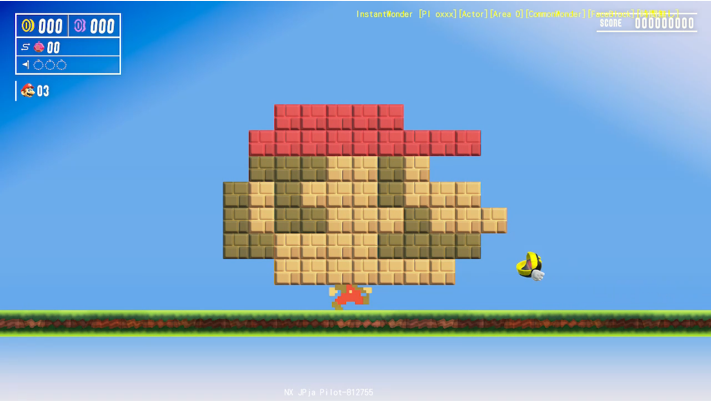
Enlarge / A prototype wonder effect—featuring Mario’s head turned into blocks that could be eaten by enemies—didn’t make it into the final game.
Nintendo
In a game industry that seems to engage in periodic layoffs as a matter of course, it’s often hard for even popular game franchises to maintain continuity in their underlying creative teams from sequel to sequel. Then there’s the Mario series, where every person credited with the creation of the original Super Mario Bros. in the 1980s ended up having a role in the making of Super Mario Bros. Wonder just last year.
In a recent interview with Ars Technica, Wonder producer Takashi Tezuka said it wasn’t that tough to get that kind of creative continuity at Nintendo. “The secret to having a long-tenured staff is that people don’t quit,” he said. “For folks who have been there together for such a long time, it’s easy for us to talk to each other.”
That said, Tezuka added that just getting a bunch of industry veterans together to make a game runs the risk of not “keeping up with the times. Really, for me, I have a great interest in how our newer staff members play, what they play, what they think, and what is appealing to them. I think it’s very interesting the things we can come up with when these two disparate groups influence each other to create something.”
Young and old
For Super Mario Bros. Wonder, the development team solicited literally thousands of ideas for potential game-changing Wonder Effects and badges from across Nintendo. In doing so, the game was able to incorporate the viewpoints of people with a wide variety of histories and memories of the series, Tezuka told Ars.
-
Super Mario Bros. Wonder Producer Takashi Tezuka.
Nintendo
-
Super Mario Bros. Wonder Director Shiro Mouri.
Nintendo
“Among our staff, there are folks who actually maybe haven’t played some of the [older] game titles we’re talking about,” he said. “So I think there was some familiarization for those folks with some of those titles. And maybe there was some inspiration drawn from those titles that I’m not aware of.”
For a series as long-running as Mario, though, even some of the relatively “younger” development cohort can have a deep history with the series. Super Mario Bros. Wonder Director Shiro Mouri, who joined Nintendo in 1997, recalled playing the original Super Mario Bros. back in elementary school, and being “so moved and awed by the secrets and mysteries I discovered in that game.” The Wonder Effects in Wonder were an explicit attempt to recapture that feeling of being young and discovering new things for the first time, which can be difficult in such an established series.
Mouri also drew some parallels between Yoshi’s Island—where Yoshi could sometimes turn into a vehicle—and Wonder transformation effects that could turn the player into slime or a spiky ball, for instance. “That’s not to say that we drew [direct] inspiration from [Yoshi’s Island] or anything, but I think… providing surprises has always been a theme throughout our philosophy,” he said.